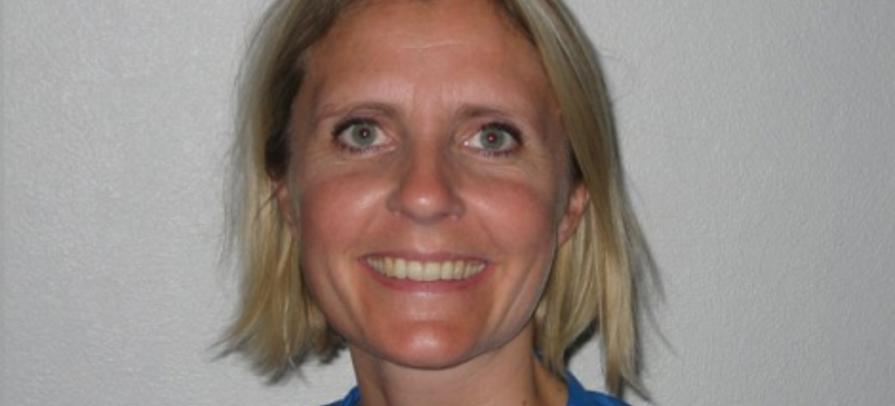Súsanna við Streym vart ph.d. við Aarhus Universitet
Mánadagin 26. mars vardi Súsanna við Streym, cand.scient.san., ph.d. ritgerð sína við Aarhus Universitet. Ritgerðin kallast: "Vitamin D Status in the First 9 Months of Life."
Peter Vestergaard, yvirlækni, hevur verið høvuðsvegleiðari hjá Súsonnu. Lars Rejnmark, deildarlækni, og Leif Mosekilde, professari, hava eisini verið vegleiðarar. Starvsstaðurin hevur verið Medicinsk endokrinologisk afdeling á Aarhus Universitetshospital.
Leiðari fyri verjuna var Holger Jon Møller, yvirlækni, ph.d. Formaður í nevndini var Ellen M. Hauge, yvirlækni, ph.d. Opponentarni vóru Haakon Meyer, professari, ph.d., Institut for Helse og Samfunn, Oslo, og Stig Andersen, yvirlækni ph.d., Aalborg Sygehus.
Les um Súsonnu við Streym í Heilagrunninum
Enskur samandráttur av ritgerðini
Vitamin D deficiency is widespread in the general population including mothers and their infants. Vitamin D is important for the development of the skeleton, but it may also be of importance to other organ systems such as the immune system and thus for protection against infections and autoimmune inflammatory disorders such as multiple sclerosis MS), type 1 diabetes mellitus (T1DM), and ultimately cancer risk. In order to explore these relations I performed four studies: 1) Maternal and infant vitamin D status during the first 9 months of infant life – a cohort study, 2) Tibial peripheral quantitative computed tomography (pQCT) in 9-month old infants: relations to gender and to maternal and infant plasma 25-hydroxyvitamin d (25OHD) and plasma parathyroid hormone levels (PTH), 3) The effect of season of birth on the later risk of infections and selected chronic diseases like MS, T1DM, cancer, schizophrenia, and myocardial infarction, and 4) The stability of 25-hydroxyvitamin D in human blood during different sampling and storage conditions.
Study 1 included 107 mothers and 108 children (one set of twins) with measurements iimmediately postpartum and at 4 and 9 months postpartum. It showed relatively low 25OHD at birth in infants (mean, ±SD: 43.3 ±20.4 nmol/l), which increased at 4 months of age (94.1 ±24.2 nmol/l), and decreased slightly again at 9 months of age (82.2 ±18.9 nmol/l). Plasma PTH was suppressed at birth (0.29 ±0.33 pmol/l), but increased gradually from 4 (2.10 ±0.75 pmol/l) to 9 months of age (3.36 ±1.15 pmol/l). The most important factor for infant 25OHD at birth and at 4 months postpartum was maternal 25OHD.
Study 2 included 78 children from study 1 undergoing a pQCT scan of the tibia at 9 months of age. It showed that maternal 25OHD postpartum tended to correlate positively with tibial total bone area (ß=0.52; p=0.07) and negatively with tibia total bone volumetric mineral density (vBMD) at 9 months of age (ß=-0.52; p=0.06). Thus mothers with high 25OHD two weeks postpartum tended to have children with larger but less dense bones at 9 months of age. Boys had larger tibial bone areas than girls, but had less dense bone than girls. PTH in infants aged 9 months correlated borderline statistically significantly with bone area (r=0.23; p=0.06).
Study 3 included three Danish birth cohorts (all born in 1940, all born in 1977, and all born in 1996) followed up from 1977 and until 2009 for the outcomes mentioned above. Study 3 showed few associations between season of birth and the risk of MS, T1DM, cancer, schizophrenia, and ischemic heart disease. For pneumonia those born during the summer tended to have a lower risk than those born during the winter in all three birth cohorts. For multiple sclerosis no association with season of birth was present in the 1940 and 1996 cohort, whereas among the 1977 cohort those born during the summer tended to have a higher risk of multiple sclerosis than those born during the winter (HR=0.70, 95% CI: 0.47-1.04, p=0.07). No other associations were found (i.e.to T1DM, cancer, and any type of infection).
In study 4 we assessed the stability of vitamin D under different storage conditions, in 14 healthy volunteers. The gold standard was serum tubes immediately processed and frozen. Compared with gold standard, EDTA tubes kept refrigerated showed a higher correlation coefficient (r= 0.882) and had a higher retrieval (%) than serum tubes kept at +5oC (r= 0.841).
In conclusion, a replete maternal vitamin D status at time of birth may have long-term positive effects on infant vitamin D status and bone size, possibly through vitamin D transferred via the umbilical cord to the child and stored in the infant. Further we found that the stability in vitamin D in general was good. The lower density with higher area in boys and in infants born of mothers with high 25OHD postpartum may result from rapid growth of the bones, leaving too little time for mineralization.
However, vitamin D status assessed by proxy in terms of season of birth does not seem to affect, to any major degree, risk of chronic diseases later in life, although an effect on risk of MS and pneumonia may be present.
